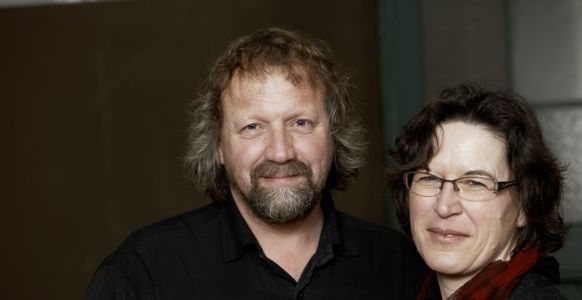Busch, Clemens

Busch, Clemens Gallery
Thank you to importer Louis/Dressner for this estate profile.
Since taking over his family winery in 1984, Clemens Busch and his wife Rita have shaped it into one of the most iconoclastic estates in the Mosel. A firm believer that natural practices in the vines and cellar lead to to the ultimate expression of terroir, Clemens exemplifies the balance between tradition and forward thinking we so look forward to when seeking out new producers.
The majority of Clemens' production is grown on the extremely steep Pündericher Marienburg, a 25 hectare hill that spans an entire hillside facing the village of Pünderich. Exposed full south/southeast and right on the edge of the river, it is widely considered amongst the very best sites in the Mosel. 17 hectares of the hill are planted in vines and Clemens owns 11 of them. As more and more of his neighbors abandoned the great vineyards of the Marienburg throughout the 1980's to plant Pinot Noir in the plains (which could be worked mechanically and was in much higher demand at the time), Clemens capitalized on their eagerness to sell at low prices. Starting with just two hectares, in due time he managed to acquire monopoles of many of the Marienburg's different sites, sometimes going as far as buying neighboring parcels from 11 different owners! The lieu-dit Marienburg was originally a much smaller, individual parcel that shared the hill with many other vineyards, all with their own names and attributes. In 1971, a law hoping to unify the identity of the area's varied terroirs declared that the entire hill be re-named Marienburg. This decision never sat well with Clemens; as the fifth generation working this land, he knew that these vineyards featured different soil compositions and micro-climactic variables influenced by fissures, vineyard walls, the inclination of slope and exposure. In such, Clemens vinifies his wines site by site and bottles them by the historic vineyard names. The original Marienberg vineyard faces south/southeast, is dominated by grey slate and also produces "Vom Grauen Schiefer" (from grey slate) and "Vom Roten Schiefer" (from red slate) as well as the Marienburg GG. Rothenpfad is all red slate, a true rarity in the Mosel. Prior to 2006, most of this hard to reach area was overgrown. A land consolidation permitted Clemens to replant and save some old vines. Today, about a hectare is grown. Farhlay is the only part of the hill dominated by blue slate. The soil is particularly rocky, so the vines must dig deep to find their nutrition here, resulting in a mineral style. Falkenlay is defined by grey slate, and located between Rothpfad and Farhlay. Considered by some to be the finest site on the Marienburg, it provides the best grapes for noble sweet wines. A special selection of the best grapes from the old vines of this vineyard are bottled under the name "Raffes". Finally, Felsterrasse is a tiny terraced parcel and Clemens' favorite. The soils are composed of thick grey slate and are particularly hard to work. 80% of the wines are fermented and aged in very old, 1000 liter barrels; the youngest are 48 years old and many were built by Rita's father. Nothing is ever added to the wine, save a low dose of sulfur at bottling. The wines are never fined. For the sweet and noble sweet wines, Clemens prefers halting the fermentation with a deep freeze followed by a filtration, allowing him to drastically reduce sulfur, which again is only added at bottling. Pay attention to the capsules on the top of each different bottling, as their color (red, grey, blue) indicate the slate type of each vineyard.
Background
- Name of Estate: Clemens Busch
- Region: Mosel
- Country: Germany
- Proprietor: Clemens and Rita Busch
- Size: 16 hectares
- Farming: Biodynamic (Certified)
- Soils: Red, blue and grey slate
- Grapes grown: Riesling (99%), Pinot Noir (1%)
- Fun facts: Clemens Busch is the seventh generation in his family to be called Clemens! He broke the tradition by naming his sons Florian and Johannes.
Wines from this Producer

Riesling Marienburg Felsterasse Grosses Gewachs

Riesling Marienburg Rothenpfad Grosses Gewachs

Riesling Marienburg Fahrlay Grosses Gewachs

Riesling Marienburg Falkenlay Grosses Gewachs

Riesling Marienburg Fahrlay Terrassen

Riesling Marienburg Grosses Gewachs

Riesling Marienburg Kabinett

Riesling (alter-) Native

Riesling Trocken

Riesling Trocken LS

Riesling Vom Roten Schiefer

Riesling Vom Grauen Schiefer

